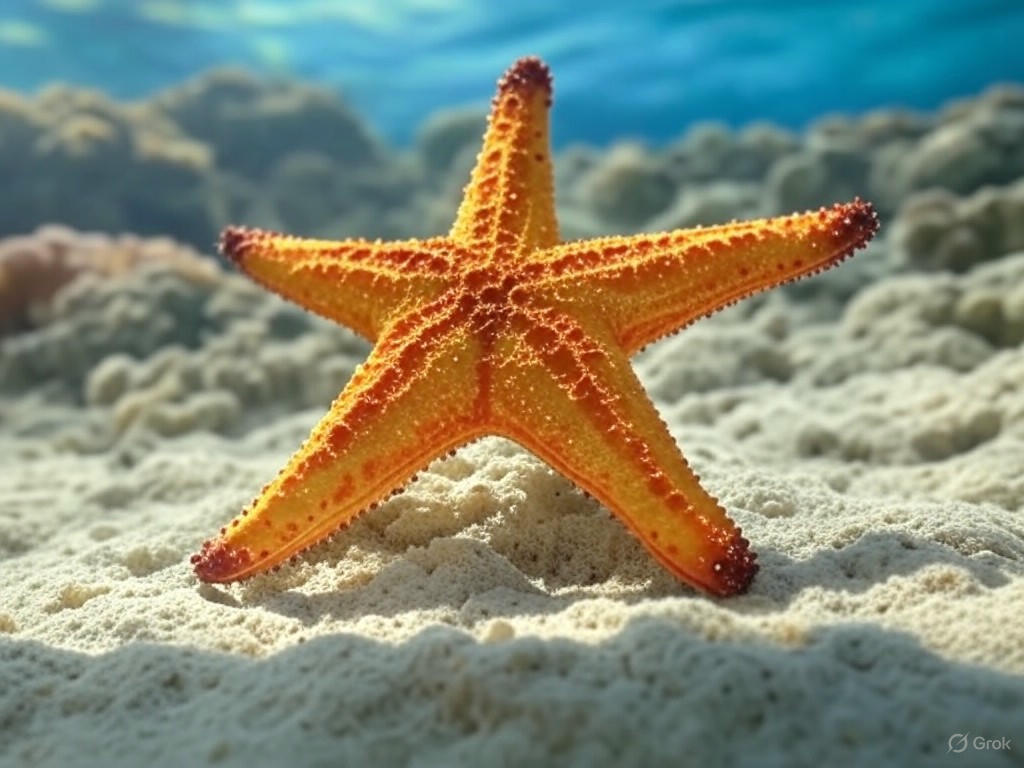
Sea Stars Disease Protection: Cool Water Shields Against Wasting Illness
Understanding Sea Star Wasting Disease: A Major Threat to Ocean Life
Have you ever wondered what’s lurking beneath the waves that could wipe out entire populations of colorful sea stars? Sea star wasting disease has been a silent powerhouse of destruction, affecting dozens of species and reshaping coastal ecosystems. First spotted in large numbers back in 2013 along the Pacific coast, this illness has spread from Alaska to Mexico, leaving marine biologists racing to understand its grip.
Imagine vibrant sea stars dissolving into nothing—it’s happened to about 40 species, turning thriving reefs into ghost towns. This rapid decline underscores why tracking sea star wasting disease is crucial for ocean health, as it highlights vulnerabilities in our warming seas.
The Progression of Sea Star Wasting Disease and Its Devastating Signs
Spotting sea star wasting disease early can make all the difference, but it’s a sneaky foe. Affected sea stars often start by ignoring their favorite meals and moving sluggishly, which might seem minor at first.
Early Warning Signs to Watch For
What begins as subtle refusal to eat can escalate quickly—think white spots appearing like uninvited guests on their bodies. In aquariums, caretakers have noticed this lethargy first, giving us a window into how sea star wasting disease unfolds in the wild.
Ever seen a starfish just… wilt? That’s often the first clue, and catching it here could help protect populations before things worsen.
Advanced Symptoms and Rapid Deterioration
As the disease advances, those white lesions spread like wildfire, causing tissues to break down and arms to twist unnaturally. It’s heartbreaking to picture a sea star losing its grip and literally falling apart, with detached arms still twitching on their own.
This stage turns a once-mighty creature into a mere shadow, emphasizing the urgent need for strategies against sea star wasting disease. Researchers note that without intervention, complete disintegration follows, leaving ecosystems in disarray.
Unraveling the Causes of Sea Star Wasting Disease
Scientists have been piecing together the puzzle of sea star wasting disease for years, and it’s far from straightforward. What started as a suspected viral outbreak has evolved into a more complex story involving environmental triggers.
The Viral Suspects Behind Sea Star Wasting Disease
Back in 2014, a virus called sea star-associated densovirus was pegged as the main culprit, exciting researchers with a potential target. But later studies in 2018 and 2020 showed it’s often present in healthy stars too, throwing a curveball into the equation.
Does this mean viruses aren’t involved? Not quite—they might play a role under certain conditions, making sea star wasting disease even trickier to combat.
The Role of Microbial Imbalance in Sea Star Wasting Disease
Shifting focus, experts now eye bacterial overgrowth as a key driver, where oxygen gets gobbled up on the sea star’s surface. Rough-textured species like Asterias seem hit hardest, as their surfaces harbor more microbes.
Imagine a tiny ecosystem gone wrong; this imbalance creates a hypoxic zone that starves the sea star, accelerating sea star wasting disease. It’s a reminder of how delicate marine life can be.
Temperature’s Role in Combating Sea Star Wasting Disease
When it comes to shielding sea stars, cooler water might just be their best defense against sea star wasting disease. Studies show that warmer temps speed up bacterial activity, making outbreaks more likely and severe.
How Cool Water Temperatures Protect Against Sea Star Wasting Disease
Picture bacteria slowing down in chillier waters—it buys sea stars precious time by maintaining oxygen levels. In aquariums, keeping things around 55°F has drastically cut disease incidents, proving that temperature control works wonders.
Is this a simple fix? For captive settings, yes, but it highlights how managing cool water could be key in fighting sea star wasting disease outbreaks naturally.
The Link Between Climate Change and Sea Star Wasting Disease
As oceans warm due to climate change, we’re seeing more frequent marine heatwaves that trigger these illnesses. This connection means sea star wasting disease could become even more common, threatening species that rely on stable conditions.
What can we do? Monitoring water temps in vulnerable areas might serve as an early alert system, giving conservationists a head start.
Other Factors That Worsen Sea Star Wasting Disease
Beyond temperature, a mix of stressors can pile on, making sea stars even more susceptible. Ocean acidification, for instance, weakens their structures, much like acid rain eroding stone.
The Impact of Pollution on Sea Star Wasting Disease
Runoff from farms and cities dumps nutrients into the sea, fueling algal blooms that indirectly boost bacterial growth. It’s like throwing fuel on a fire for sea star wasting disease, especially in polluted coastal spots.
Ever thought about how your daily choices affect the ocean? Reducing pollution could be a game-changer for sea star health.
When Multiple Stressors Collide with Sea Star Wasting Disease
Combine warming waters, acidity, and pollution, and you get a perfect storm that accelerates the disease. Researchers have seen this combo lead to catastrophic losses, underscoring the need for holistic protection efforts.
How do we break this cycle? By tackling these issues together, we might give sea stars a fighting chance against sea star wasting disease.
Why Sea Star Wasting Disease Matters for Ecosystems
Sea stars aren’t just pretty faces—they’re keystone players in marine worlds, and their decline ripples through everything. Without them, prey like mussels take over, choking out diversity.
The Ripple Effects of Sea Star Wasting Disease on Food Webs
For example, the loss of sunflower stars has let sea urchins explode, devouring kelp forests that shelter countless species. It’s a domino effect that shows how sea star wasting disease disrupts the balance.
What’s at stake? Entire habitats that support fisheries and biodiversity, making sea star protection vital for us all.
Strategies to Protect Against Sea Star Wasting Disease
Tackling sea star wasting disease means focusing on what we can control, like temperature in tanks or pollution on land. Here’s how experts are stepping up.
Tips for Managing Sea Star Wasting Disease in Captivity
In aquariums, sticking to cooler waters and having backup chillers can prevent outbreaks—it’s practical advice that’s already saving lives. Quarantine new arrivals to avoid introducing the disease, and monitor closely for early signs.
Want actionable steps? Start by ensuring your local aquarium follows these protocols; it could make a real difference.
Challenges in Fighting Sea Star Wasting Disease in the Wild
Out in the open ocean, things get tougher, but creating protected areas and cutting pollution helps buffer against the disease. Community monitoring programs, like those involving everyday beachgoers, are turning the tide by spotting issues early.
It’s a team effort—your participation in cleanups or reporting could play a part in halting sea star wasting disease.
Emerging Research on Sea Star Wasting Disease
The fight against sea star wasting disease is evolving, with scientists exploring microbiomes and genetics for breakthroughs. These frontiers offer hope for resistant strains and better detection.
Innovations in Studying Sea Star Wasting Disease
By examining protective bacteria in sea stars’ microbiomes, researchers might develop probiotics to ward off the illness. Selective breeding of survivors is another exciting path, potentially creating hardier populations.
Imagine a future where early tech alerts us to outbreaks—tools like environmental DNA sampling could be game-changers.
Wrapping Up: A Cooler Path Forward
In the end, cooler waters stand as a vital shield against sea star wasting disease, reminding us of the broader threats from climate change. By acting now—through conservation, research, and everyday choices—we can help these ocean stars endure.
What’s your take on protecting our seas? Share your thoughts in the comments, explore more on marine conservation, or join a local cleanup. Together, let’s keep the waves full of life.
References
For deeper insights, check these sources: Sea Star Wasting Syndrome Data from UC Santa Cruz, which tracks outbreaks; a NOAA infographic on Sunflower Sea Star Wasting; and research from Seacoast Science Center on microbial causes. Additional references include studies from ACS Nano and NHM.
sea star wasting disease, sea star protection, cool water temperature, marine conservation, starfish disease, sea star mortality, sea star health, ocean acidification, microbial imbalance, kelp forest impact







